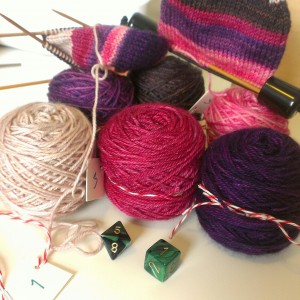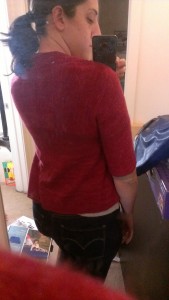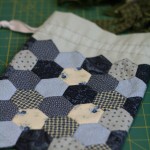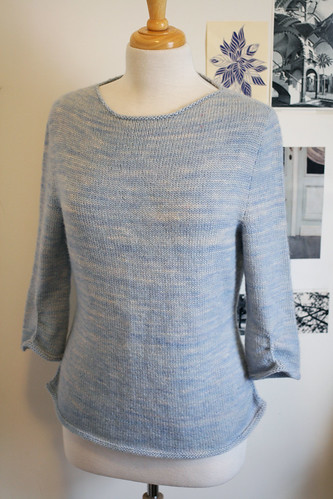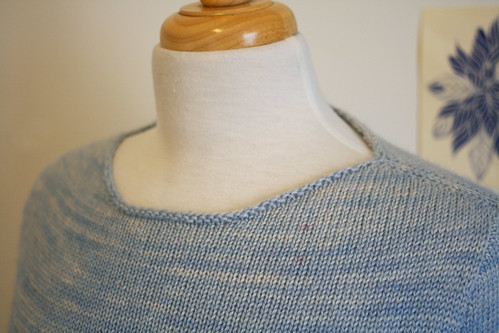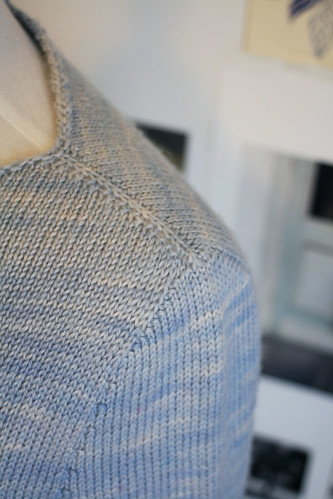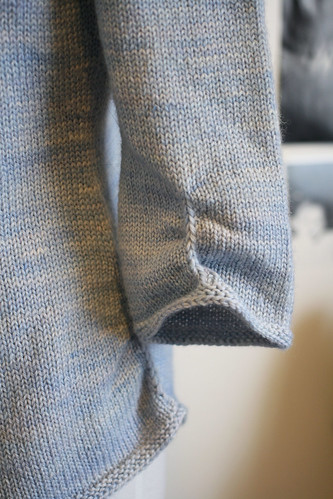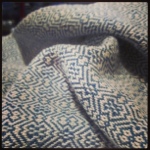I’ve been doing a bit of sewing in my spare time and I’ve taken up English Paper Piecing. I got my supplies from PaperPieces.com on a recommendation from Cauchy. I got some 1″ hexagons all precut and ready to go, and I got the super handy acrylic template that has seam allowance and everything. So I just used my rotary cutter to cut a bunch of hexagons out in a few quick motions.
Anyway, here’s a turorial for the project bags. I’m keeping my knitting in them 🙂
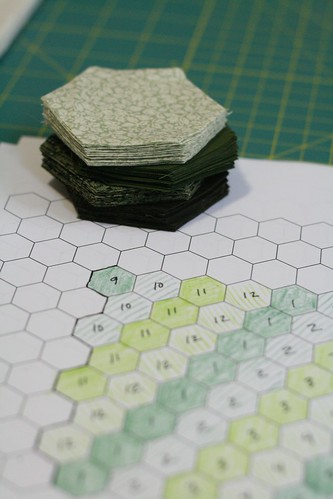
1. So first, come up with a plan. You can print out hexagon graph paper here. The first bag (the blue one) I did a bit ramshackle… I wasn’t sure exactly how big I wanted it, and I just did a random placement. But being a little bit over-planny, for the second one (the green one) I calculated how many hexies I would need for this project and cut only that many. YMMV.
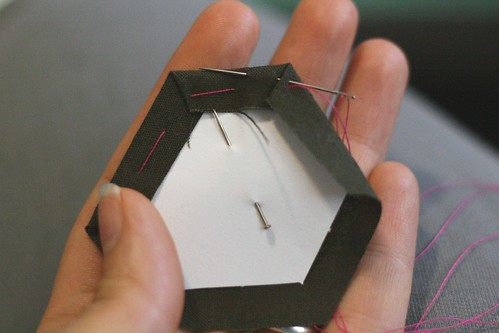
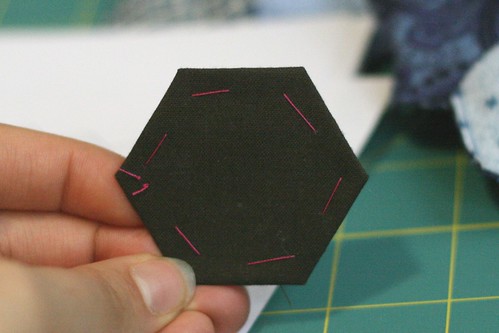
2. When all your pieces are cut out, start basting the fabric around the paper. Pin the fabric and the paper together, then use a high contrasting color thread to do some quick basting stitches all the way around. Remove the pin. Do this until you have all the paper pieces you need basted up with fabric. I kept mine corralled in berry baskets. 🙂
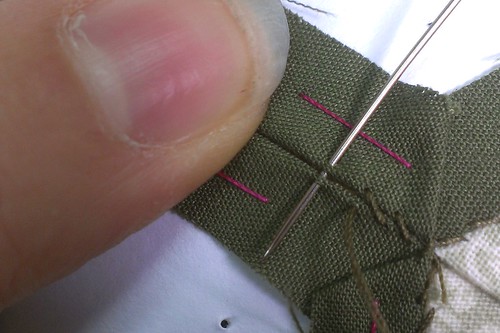
3. Stitch all your fabric covered paper pieces together, catching just the very edge of the fabric. You don’t want to bite too deep into the side or you’ll sew through the paper instead of just the fabric. Make sure that if you graphed out your design that you’re piecing the hexies in the right pattern order.
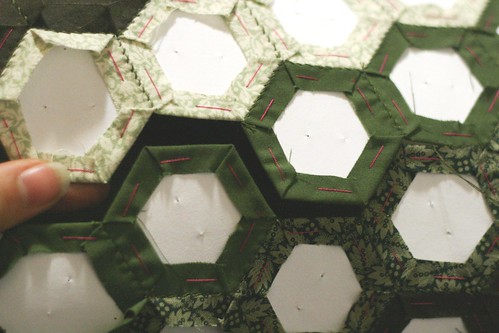
4. When you’ve got a sheet of your hexies all pieced together, turn it into a tube by stitching one narrow end to the other. If you did each row of hexies the same number of hexes wide, then the ends will interlock perfectly.
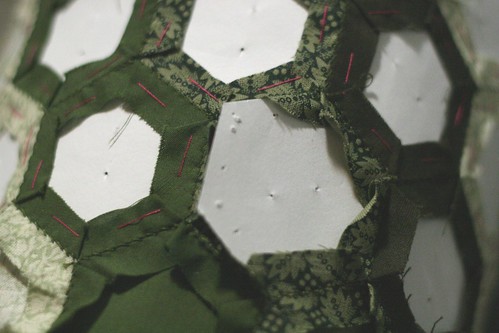
5. Remove your basting stitches and take out the paper. I find it helpful to do the paper at the top and bottom of the tube last so that I can iron it with the paper still inside to get crisp points. Just slide the whole tube with the paper still inside the edge hexies over the tapered end of your ironing board and press it in sections. When all the paper is removed, you’re left with an inside out tube of fabric hexes all pieced together.
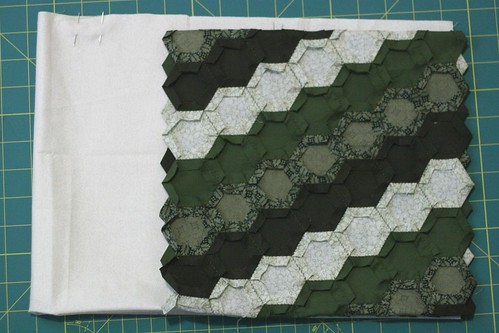
6. Cut your top/lining fabric to the correct width (the width of the hexie tube plus seam allowance) and to the right length. Determining the length is a little tricky… but give yourself seam allowance at the bottom so that the end will hang out just inside the most indented corners of the bottom edge, and give yourself enough overlap at the top to fold down for the top/outside edge of the bag plus some to which you will sew the top row of hexes.
If you look at the light fabric on the left, you’ll see it’s folded over, (this will be the outside top portion), and you’ll see two pins. Place those pins on the folded over section only at the place you want the drawstring channel to sit. Mine starts about 1.5″ from the fold. The gap between the pins needs to be a little bigger than the size of your drawstring ribbon so that the ribbon can slide easily in the channel.
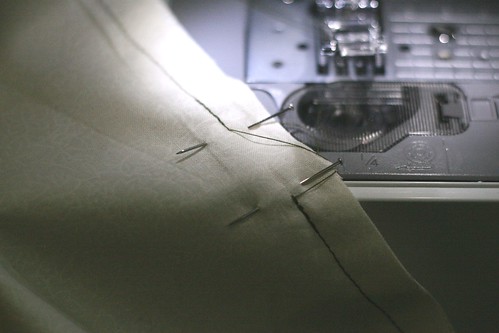
7. Sew across the bottom edge of the lining fabric, turn the corner and seam up the long side, but leave a gap between the two pins as shown in the photo above. Seam from the other side of the gap to the end.
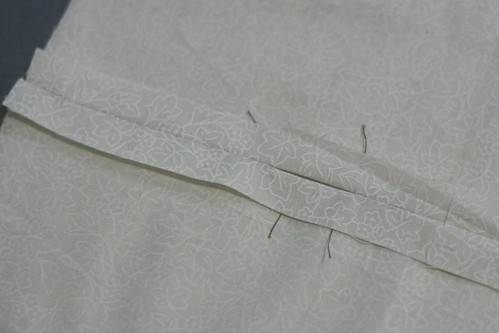
8. Iron the seam allowances out so you can see the gap.
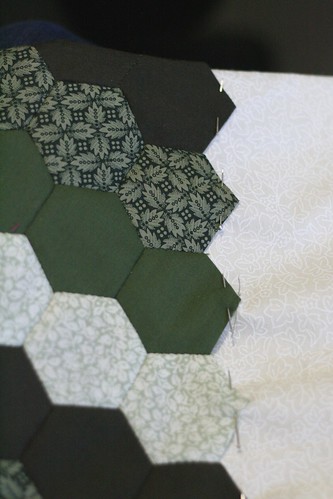
9. Turn the lining tube right side out and pin one end of the hexie tube to it. Be careful here as the hexies will stretch, but the lining tube won’t. So make sure you pin, pull the lining tube taught and then repin if needed.
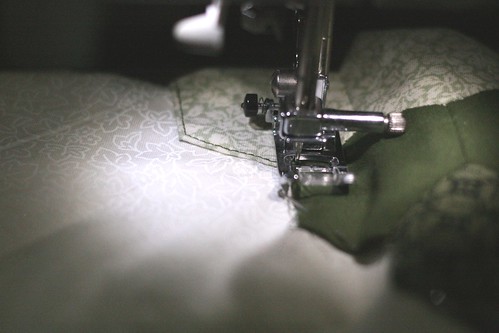
10. Topstitch the hexie tube to the lining tube all the way around. If you’re doing a particularly small bag, or smaller hexies, this may be easier to do by hand. The blue bag was smaller and it just barely fit on my machine to do this.
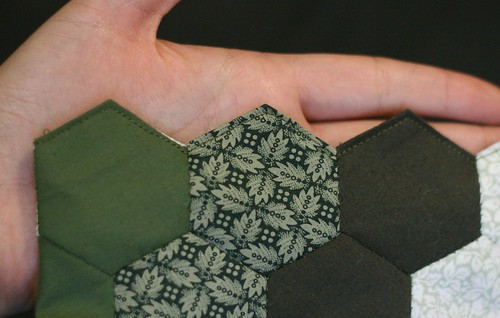
11. Pin the bottom end of the hexie tube together and top stitch those hexies to each other to make a picot bottom edge.
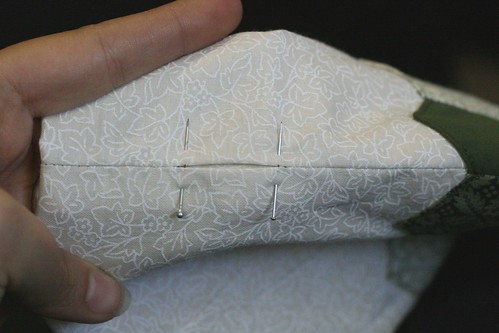
12. Turn the inside half of the lining tube to the inside and get it as far down into the hexie tube as you can with it still laying flat. As you do this, make sure that your seam allowances still face out so that your channel gap for the drawstring is open to the inside lining fabric like in the photo above.
Pin both sides of the opening and top stitch to make the channel.
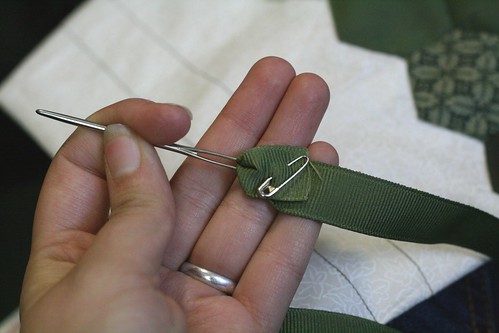
13. Thread your drawstring ribbon through the channel. If you don’t have one of those handy flexible drawstring threaders you can use a large, blunt yarn needle and a small safety pin. Just thread the ribbon through the yarn needle and pin it to itself and thread it through the channel. Tie an overhand knot in the two ends of the drawstring and trim at an angle.
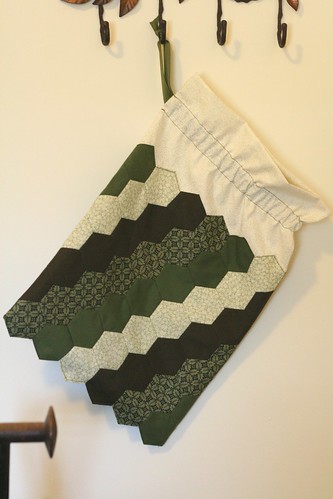
Voila! Hexie project bag. I’m planning on using other layouts of paper piecing and doing more for gifts and for myself. It’s a great way to use up scraps of fabric too!
p.s. If you want to avoid the picot edges, you can buy half six point diamonds to cover with fabric and fill in the bottom and top edges of the hexie tube. Then top stitching and the seam along the bottom will be much easier.
 It’s January, and in Salt Lake City that means colder air trapped in the valleys by high pressure areas leaving us stewing in our own pollution juices, as it were. A 10 minute drive up one of the many surrounding canyons would reveal sunny skies and warmer temperatures, but down here in the valley the air is thick with gunk and the sun won’t shine through the inversion.
It’s January, and in Salt Lake City that means colder air trapped in the valleys by high pressure areas leaving us stewing in our own pollution juices, as it were. A 10 minute drive up one of the many surrounding canyons would reveal sunny skies and warmer temperatures, but down here in the valley the air is thick with gunk and the sun won’t shine through the inversion.  When my hair is down it peeks out just a bit, but when it’s pulled up it shows much more brightly. The color changes a bit with the light. Sometimes it’s much more purple and sometimes it’s quite pink.
When my hair is down it peeks out just a bit, but when it’s pulled up it shows much more brightly. The color changes a bit with the light. Sometimes it’s much more purple and sometimes it’s quite pink.

